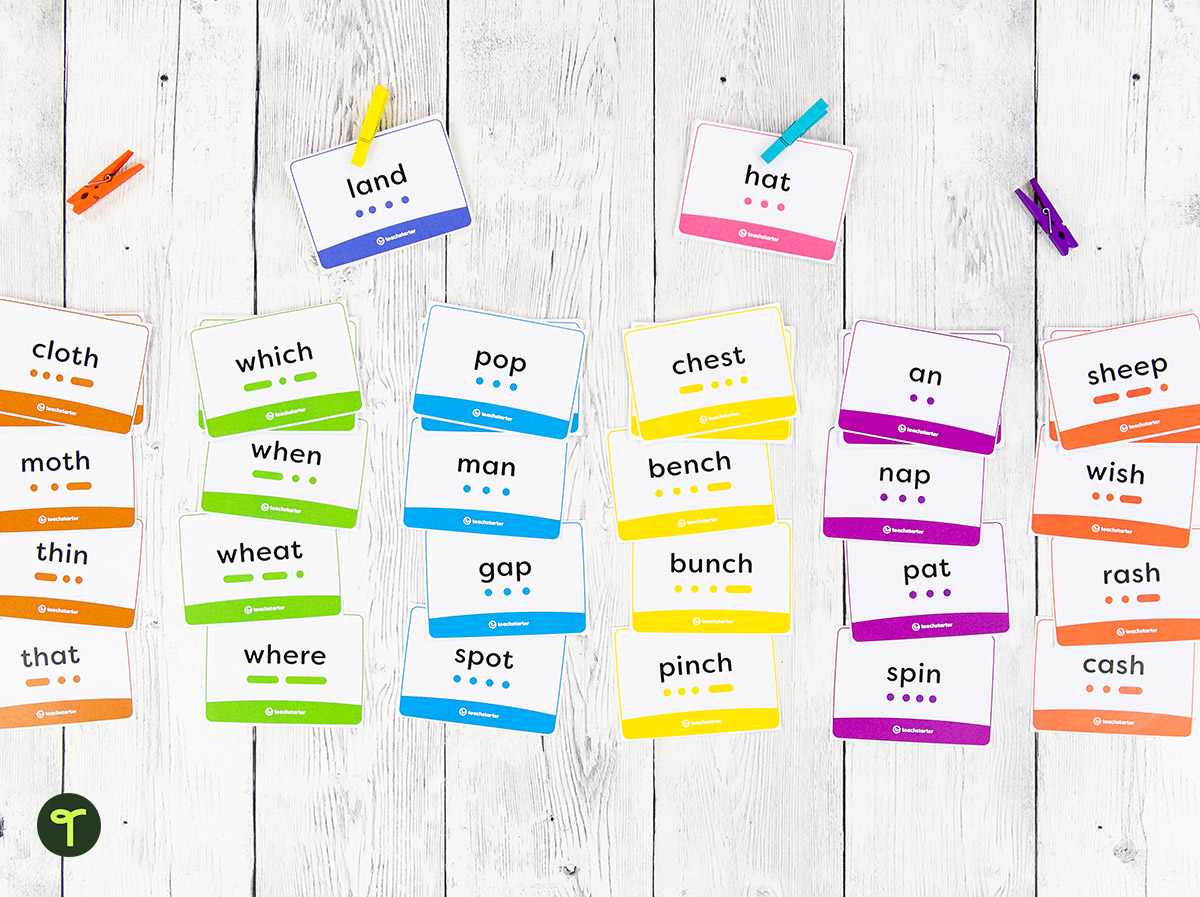What is a digraph? If you’re teaching phonological awareness or reading, you’ll need to know! A digraph is a building block of literacy for any young reader.
But how do you teach digraphs in phonics? And what is a consonant digraph? Grab your favorite warm beverage, and let’s dive into the basics of this important part of phonics with a primer from the ELA teachers on the Teach Starter team!
Digraph Definition
To really answer the question “what is a digraph,” it’s worth going back to the word origin. The word digraph dates back to the 1700s, and it’s built from the roots di- (meaning twice) and -graph (meaning something written). Put together, you have twice written, and it translates … roughly into the actual meaning.
By definition, a digraph is the term used to describe two consecutive letters that work together to make one sound. Understanding this is crucial for students because these two-letter pairs show up in most words in the English language. If kids do not know how these digraphs and sounds correspond, they’ll struggle to read new words.
If you want to get really technical, digraphs are a kind of grapheme — a word that refers to any unit (such as a letter or group of letters) in a writing system. In this case, graphemes are letters or groups of letters in English.
Making sense? We’ve got one more important phonics term for you! The English language is made up of about 44 phonemes, the word for the individual speech sounds that make up words. Phonemes can be written in more than 200 letter combinations known as — you guessed it — graphemes and digraphs!
To help you keep it all straight, explore our teacher team’s favorite digraph worksheets!
What Are the Most Common Digraphs in the English Language?
Digraphs are often taught in order, starting with those most commonly appearing in English words. Here are some common digraph examples students will encounter:
- ch (as in chin),
- ch (as in school),
- ng (as in sing),
- ph (as in phone),
- sh (as in ship),
- th (as is think),
- wh (as is wheel)
What Is a Consonant Digraph?
There are several kinds of digraphs that students will encounter as readers. First up, let’s talk about consonant digraphs.
A consonant digraph is a combination of two consonants that represent one sound. For example, the “wr” digraph represents the sound /r/ in words like write, wriggle, and wrong.
While some consonant digraphs will represent the sound made by a letter of the alphabet — such as the /f/ sound created by the digraph “ph” in the words phone or phonics — others create new sounds such as “sh” or “ch.”
What Is a Vowel Digraph?
If a consonant digraph is made up of consonants, then it stands to reason that a vowel digraph is a combination of two vowels that represent one sound. For example, the “oa” digraph represents the long /o/ sound. Another vowel digraph example students will encounter as they begin to read is “ea” which creates the long /e/ sound in words like “wheat” and “read.”
Vowel digraphs are also called vowel teams.
What Is the Difference Between a Digraph and a Blend?
Have you heard the terms digraph and blend thrown around? They seem like they’d be the same thing, but don’t be deceived!
While they look the same, there is a major difference between a digraph and a blend. A digraph is defined as two letters that make a single sound. The blend is a combination of letters whose sounds are linked together, but not combined when forming a word. The blend stands apart because its letters still make two distinct sounds.
For example, the “sl” combination in “sleep” is a blend, rather than a digraph. That is because you still pronounce the /s/ and /l/ sounds when pronouncing the word.
Another difference between a digraph and a blend is that a digraph can be made up of two consonants or two vowels, while blends are only made up of consonants.
This video shows a simple way to teach students segmenting and blending:
Understanding Syllables to Identify Digraphs
Sometimes, when children are learning to decode words in a text, they encounter letter combinations that appear to be digraphs but don’t actually fit the digraph definition. For example, if students identify “ng” as a single sound in words like “bang” or “sing”, they must also be able to recognize that those letters represent separate sounds in words like “mango.”
A knowledge of syllables (and how to break them down) is important so that children are able to distinguish between the two representations. Students should understand that the “ng” in mango appears where the word would be broken into syllables. Digraphs cannot cross syllable boundaries, as they must make one sound. In this case, the “ng” in mango is not a digraph, since both sounds are clearly pronounced in separate syllables. In the word man/go, the sounds are read as separate consonant sounds, thereby eliminating the “ng” from being labeled as a digraph.
Digraph Activities
Teaching about digraphs? Use these engaging and curriculum-aligned digraph activities to unlock your students’ understanding of this key phonics concept!
[resource:4716812] [resource:4699522] [resource:4708635]









Comments